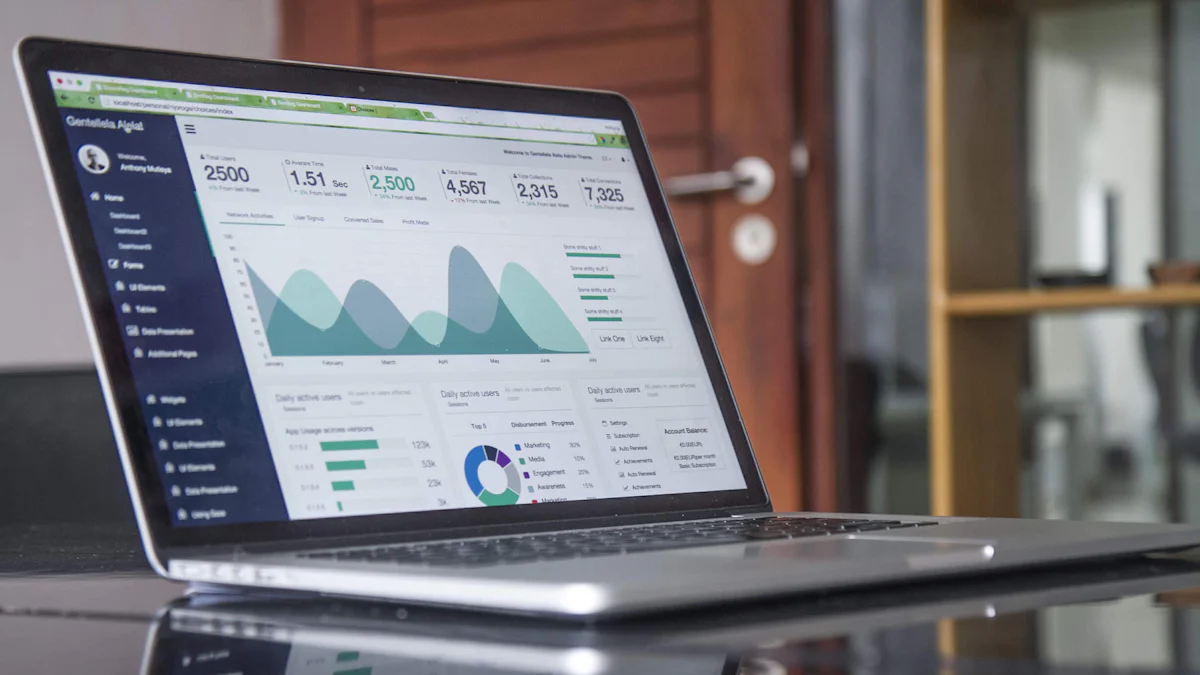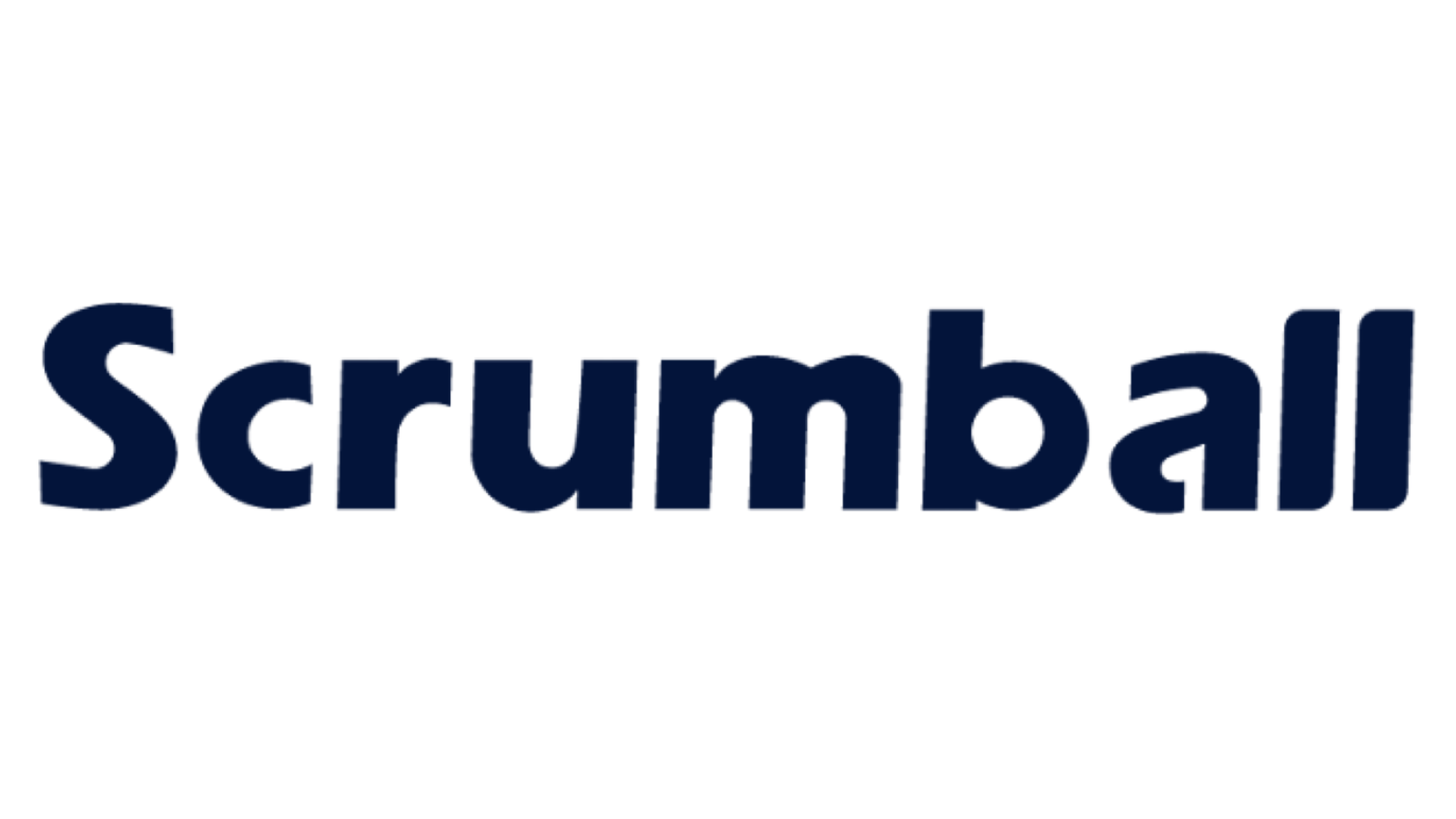6 Essential Steps to Implement Marketing Automation Strategies

Marketing automation has become a game-changer for businesses aiming to achieve their goals faster and more effectively. With 75% of companies already using marketing automation, it’s clear that this technology is no longer optional—it’s essential. By automating routine tasks like email follow-ups and social media posting, you can focus on strategic initiatives that drive growth. Tools like automated workflows and personalized messaging allow you to engage your audience with precision, saving time while improving efficiency. As a marketing automation manager, you hold the key to scaling efforts without sacrificing quality. Start today and unlock the potential of automation to transform your marketing strategy.
Define Goals and Identify Target Audience
Set Clear Objectives
Defining your goals is the foundation of any successful marketing automation plan. Without clear objectives, your efforts may lack focus and direction. Start by aligning your goals with your marketing automation strategies to ensure every action supports your broader business objectives.
What do you want to achieve? Businesses often aim to:
- Generate more qualified leads and improve lead quality.
- Boost sales and reduce cart abandonment rates.
- Retain customers and enhance loyalty.
- Promote brand awareness and reduce dependency on support teams.
For example, if your goal is to increase lead generation, you can use marketing automation to create lead magnets and nurture campaigns. If customer retention is your focus, automated re-engagement emails can keep your audience connected. By defining your goals and objectives, you’ll create a roadmap that guides your marketing automation strategy toward measurable success.
Identify Your Target Audience
To make your marketing automation strategies effective, you need to know who you’re targeting. A well-defined audience ensures your messages resonate and drive action. Use data to create detailed buyer personas that reflect your ideal customers.
Here’s how you can identify your audience:
- Tag your lead magnet to understand what interests your audience.
- Record the lead source using tools like UTM parameters to track where your leads come from.
- Follow up with leads after their initial interaction to refine your targeting.
Additionally, survey your existing customers to uncover their demographics, spending habits, and preferences. Look up profiles of ideal customers on platforms like LinkedIn to identify common traits. Store this information in your CRM and segment it for targeted campaigns.
Understanding customer pain points and behaviors allows you to craft personalized content that speaks directly to their needs. This approach not only improves engagement but also helps you generate more qualified leads.
Choose the Right Marketing Automation Software
Selecting the right marketing automation platform is a critical step in building effective marketing automation workflows. The right tool can streamline your processes, improve efficiency, and deliver an improved campaign ROI. However, choosing the wrong platform can lead to wasted resources and missed opportunities.
Evaluate Tools and Features
When evaluating marketing automation software, focus on tools that align with your business needs. Look for platforms that support your marketing automation strategies and offer features that enhance your workflows.
- Integration capabilities: Ensure the software integrates seamlessly with your existing CRM, email marketing tools, and other systems.
- Scalability: Choose a platform that grows with your business, accommodating increased data and user demands.
- Analytics and reporting: Opt for software with robust analytics to track performance and refine your campaigns.
- Usability: A user-friendly interface reduces the learning curve and boosts productivity.
Some top-rated platforms include:
- HubSpot: Known for its inbound marketing focus and CRM integration.
- Mailchimp: Ideal for automating email workflows and small businesses.
- Marketo: Designed for larger businesses with advanced needs.
- Pardot: Perfect for B2B marketers with Salesforce integration.
Assess Pricing and Support
Pricing plays a significant role in choosing the right marketing automation platform. Compare costs against your budget and expected ROI to ensure you’re making a sound investment. Avoid the common mistake of focusing solely on price without considering the value the tool provides.
- Training and customer support: Select software that offers comprehensive training and responsive support. Poor customer support can lead to frustration and delays.
- Flexible pricing plans: Look for platforms with pricing tiers that match your business size and goals. For example, Mailchimp starts at $6 per month, while Pardot ranges from $1,250 to $20,000 per month.
Avoid signing lengthy contracts unless you’re confident in the platform’s ability to meet your needs. Test the customer support before committing to ensure you’ll have help when needed. By carefully evaluating features, pricing, and support, you’ll set the foundation for successful marketing automation workflows.
Map Out the Customer Journey

Visualize the Journey
Mapping out the customer journey is essential for creating a seamless experience that guides your audience from awareness to loyalty. Start by identifying the key stages of the journey: awareness, consideration, decision, and loyalty. Each stage represents a unique opportunity to engage your customers and move them closer to conversion.
At the awareness stage, marketing automation can help you capture attention through personalized email campaigns and tailored content suggestions. During the consideration phase, retargeting ads and product recommendations can assist customers in evaluating their options. For the decision stage, cart abandonment emails and upsell opportunities encourage customers to complete their purchases. Finally, loyalty programs and post-purchase follow-ups nurture long-term relationships and turn satisfied customers into advocates.
Companies like Bonobos have successfully used marketing automation to enhance their customer journeys. By sending personalized emails and recovering abandoned carts, they’ve increased engagement and sales. Similarly, automated onboarding processes and lead scoring workflows can improve first impressions and boost conversion rates.
Define Triggers and Actions
Triggers and actions form the backbone of your marketing automation workflows. Triggers are specific customer behaviors that initiate automated responses. For example, an abandoned shopping cart can trigger an email reminding the customer of their forgotten items. Similarly, signing up for a newsletter can prompt a welcome email introducing your brand.
Plan your automated responses to align with customer needs. Use upsell workflows to recommend products based on past purchases. Implement customer happiness workflows to send tailored messages based on satisfaction scores. These strategies not only save time but also ensure consistent messaging across channels.
By mapping out the customer journey and defining triggers, you’ll create a system that delivers personalized experiences at scale. This approach drives engagement, improves efficiency, and maximizes your marketing ROI.
Create and Deliver Personalized Content
Develop Targeted Content
Creating content tailored to each stage of the customer journey is essential for a successful marketing automation strategy. You need to craft messages that resonate with your audience’s needs and guide them toward conversion. For example:
- Welcome emails: Greet new subscribers with a warm introduction to your brand and highlight key offerings.
- Product recommendations: Suggest items based on browsing history or past purchases to encourage repeat sales.
- Re-engagement campaigns: Win back inactive customers with exclusive offers or reminders of what they’re missing.
Personalized communications like these not only enhance viewer engagement but also build loyalty and improve conversion rates. The table below highlights the benefits of delivering personalized content:
| Benefit | Description |
|---|---|
| Enhancing viewer engagement | Personalized content captivates audiences by aligning with their specific interests and preferences. |
| Building loyalty | Tailored content fosters stronger bonds with audiences, leading to increased retention and loyalty. |
| Improving conversion rates | Personalized content guides viewers through the conversion funnel, resulting in higher sales. |
By focusing on targeted content, you’ll attract more qualified leads and nurture them effectively.
Use Dynamic Content
Dynamic content takes personalization to the next level by adapting to individual user data. This approach ensures your automated marketing campaign delivers personalized interactions that feel relevant and timely. For instance, dynamic content blocks on websites adjust based on what users are likely to find valuable.
Here are some examples of dynamic content that boost engagement:
- Dynamic pop-ups for surveys tailored to user location or interests.
- Email campaigns that adapt to user behavior, such as abandoned cart reminders or product updates.
Dynamic content also outperforms static alternatives in marketing automation. The table below illustrates its advantages:
| Marketing Use Case | Dynamic Content | Static Content |
|---|---|---|
| Contextual emails based on user data for list segregation, leading to 10-15% better open rates. | General emails sent to an entire database with lower open rates of 5-10%. | |
| Text and Display Ads | More relevant ads resulting in better click-through rates. | Less relevant ads with lower competitiveness. |
| Engagement | Improved on-site navigation increasing user engagement. | Higher bounce rates due to lack of navigation options. |
| Conversion | Contextual banners that add value to users. | Static banners that may not connect with the content. |
To maximize results, test different formats and refine your approach. Experiment with layouts, messaging, and visuals to discover what resonates most with your audience. By leveraging dynamic content, you’ll create personalized interactions that drive engagement and conversions.
Set Up Automated Workflows

Build and Customize Workflows
Building effective workflows is the backbone of a successful marketing automation plan. You need to create workflows that align with your goals and deliver results. Start by analyzing your existing processes to identify inefficiencies. Map out these workflows and prioritize the ones that will have the highest impact on your marketing automation strategy.
Use templates to save time or design custom workflows tailored to your specific objectives. For example, lead nurturing sequences can guide prospects through the sales funnel by delivering timely, relevant content. Post-purchase follow-ups can enhance customer satisfaction and encourage repeat business. Businesses that automate lead enrichment workflows, for instance, ensure sales teams receive detailed customer insights, enabling personalized outreach and better conversions.
To build workflows that work seamlessly, engage key stakeholders early in the process. Their input ensures the workflows address real challenges and improve efficiency. Choose tools that integrate well with your existing systems and design user-friendly workflows to make implementation smooth. Visualizing workflows also helps you understand and execute them effectively.
Test and Refine
Testing is essential to ensure your automated marketing campaign runs smoothly. Begin by defining clear workflow rules. These rules form the framework of your automation and guide how it responds to triggers. Use test data to simulate real scenarios and confirm that the workflows function as intended.
Once your workflows are live, monitor their performance regularly. Look for areas where timing, messaging, or triggers could improve. For example, if a lead nurturing sequence isn’t converting more qualified leads, adjust the timing of your emails or refine the content to better address customer pain points. Regular testing and refinement keep your workflows efficient and aligned with your strategy.
Successful marketing automation requires constant optimization. By refining your workflows based on performance data, you’ll create a system that adapts to your audience’s needs and drives results. This approach ensures your marketing automation strategy remains effective and delivers long-term value.
Measure and Optimize Results
Track Performance Metrics
Tracking performance metrics is essential for evaluating the success of your marketing automation plan. By monitoring key indicators, you can identify what’s working and where adjustments are needed. Focus on metrics like open rates, click-through rates, and ROI to measure the effectiveness of your automated marketing campaign. These metrics reveal how well your emails, ads, and workflows engage your audience and convert leads into customers.
To gain deeper insights, use analytics tools that simplify performance tracking. Tools like Zalster, Revealbot, and Trapica analyze real-time data and optimize your campaigns for better results. Shoelace, for example, focuses on customer journey retargeting, helping you create personalized ad sequences based on customer interactions. These tools ensure you stay informed and make data-driven decisions to enhance your marketing automation strategy.
Here’s a table of key metrics to track:
| Metric | Description |
|---|---|
| Customer Acquisition Cost | Measures the cost of acquiring new customers, helping assess the efficiency of lead generation efforts. |
| Conversion Rates | Indicates the percentage of users completing desired actions, crucial for evaluating campaign effectiveness. |
| Customer Lifetime Value | Represents the total revenue expected from a customer, indicating the long-term value of marketing efforts. |
| Customer Retention | Tracks the percentage of customers who remain loyal, essential for understanding the impact of retention strategies. |
Continuously Improve
Improvement is an ongoing process in any successful marketing automation strategy. Use data insights to identify areas for enhancement. For example, 37% of B2B marketers aim to optimize their overall strategy, while 34% of B2C marketers focus on improving data quality. Start by analyzing performance data and pinpointing weak spots in your workflows.
Experiment with A/B testing to refine your campaigns. Test subject lines, email formats, or call-to-action buttons to see what resonates most with your audience. Regularly monitor metrics like open rates and click-through rates to ensure faster lead response times. Adjust your campaigns based on these insights to improve customer engagement and drive better results.
Businesses like Warby Parker and BarkBox have achieved successful marketing automation by continuously optimizing their strategies. Warby Parker boosted repeat purchases with targeted recommendations, while BarkBox reduced churn by 15% through retention workflows. You can achieve similar results by balancing automation with personalization and leveraging customer insights effectively.
By tracking metrics and refining your approach, you’ll create a system that adapts to your audience’s needs. This ensures faster lead response times, stronger customer engagement, and a successful marketing automation strategy that delivers long-term value.
Implementing marketing automation strategies can transform your business by streamlining processes and delivering personalized experiences. To recap, the six essential steps include:
- Define your goals.
- Identify your target audience.
- Map out your buyer’s journey.
- Choose the right marketing automation platform.
- Design your automation workflows.
- Measure, refine, and optimize.
These steps interconnect to create a seamless and successful marketing automation strategy. By following them, you’ll save time, reduce costs, and improve lead generation. Automation also nurtures leads effortlessly, ensuring long-term growth.
Don’t let challenges like poor data quality or over-reliance on automation hold you back. Start by defining your goals and exploring tools that align with your strategy. With the right implementation, you’ll unlock the full potential of successful marketing automation.
FAQ
What is marketing automation, and why should you use it?
Marketing automation uses software to streamline repetitive tasks like email campaigns, social media posting, and lead nurturing. It saves time, improves efficiency, and delivers personalized experiences. You should use it to scale your efforts, boost ROI, and focus on strategic growth.
How do you choose the best marketing automation tool?
Start by identifying your business needs. Look for features like CRM integration, scalability, and analytics. Compare pricing and support options. Test the platform with a free trial to ensure it aligns with your goals.
Can small businesses benefit from marketing automation?
Absolutely! Marketing automation helps small businesses save time and resources. It allows you to nurture leads, engage customers, and compete with larger companies. Tools like Mailchimp and ActiveCampaign offer affordable options tailored for smaller teams.
How do you measure the success of marketing automation?
Track metrics like open rates, click-through rates, and conversion rates. Use analytics tools to monitor ROI and customer engagement. Regularly review data to identify areas for improvement and optimize your campaigns.
What are common mistakes to avoid in marketing automation?
Avoid over-automating processes, which can make interactions feel impersonal. Don’t neglect data quality—clean and segment your lists. Test workflows before launching to ensure they function correctly. Always balance automation with a human touch.
💡 Pro Tip: Start small with automation. Focus on one or two workflows, refine them, and expand as you gain confidence.
See Also
7 Key Actions for Crafting an Effective Influencer Strategy
7 Crucial Steps for Determining Content Marketing Returns
7 Steps to Create Your Influencer Marketing Platform
5 Ways to Foster Diversity in Advertising Campaigns
Practical Influencer Marketing Insights for Better Strategies
